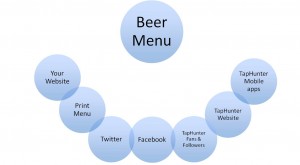Less than 72 hours ago, the Associated Press reported that doctors at C.S. Mott Children’s Hospital of the University of Michigan in Ann Arbor used a 3D laser printer to create an airway splint that saved a baby boy who was having critical daily breathing problems.
The hospital used computer-guided lasers that stacked/fused plastic layers into more than a hundred tiny tubes. The U.S. Food and Drug Administration gave the hospital special permission to implant one of the tubes in the baby, who’s now doing just fine.
In addition to healthcare, 3D printing is fast making significant inroads in a wide variety of vertical markets.
“It’s the wave of the future,” said Dr. Robert Weatherly, a pediatric specialist at the University of Missouri in Kansas City.
Elizabeth Royte, writing in this month’s Smithsonian Magazine, reported that even the printing of organs – and cartilage and skin and tissue – “holds great promise for transforming healthcare and extending longevity. Transplanted organs from a patient’s own tissues won’t be rejected. Waiting times for kidneys and other donor organs will decrease, and organ traffickers could be put out of business.”
One of Royte’s sources, Anthony Atala, who heads up the Wake Forest Institute for Regenerative Medicine, says in a few years hospitals will have 3D printers that can print skin – “from subcutaneous fat up through keratinocytes to hair follicles, oil glands and melanocytes – directly into a patient’s body.”
3D printing, like most other technologies, may have a dark side. Earlier this month Defense Distributed, a Texas-based company, posted details online on how to make a plastic gun (called the ‘Liberator’) using a 3D printer (see Fox News photo). The U.S. State Department ordered the company to take the blueprints offline because they may contain data controlled by the federal government – Defense Distributed has now complied. Before the firm did so, there were more than 100,000 downloads worldwide.
Forbes also reported that 15 of the gun’s 16 pieces were made on an $8,000 Stratasys Dimension SST 3D printer. “The final piece is a common nail, used as a firing pin that can be found in a hardware store” noted Forbes.
A U.S. Department of Homeland Security intelligence bulletin issued on May 21 highlighted the U.S. government’s chief concerns:
“Significant advances in 3D printing capabilities, availability of free digital 3D printer files for firearms components, and difficulty regulating file sharing may present public safety risks from unqualified gun seekers who obtain or manufacture 3D printed guns…magnetometers may fail to detect the Liberator, depending on device sensitivity. Future designs could further reduce or eliminate metal entirely…unqualified gun seekers may be able to acquire or manufacture their own Liberators with no background checks.”
But as the technology continues to evolve, hopefully 3D printing will be an agent of good.
Peter Friedman, who publishes the Innovation Investment Journal, said car dealers, for instance, might eventually include free 3D printers with vehicles so owners can manufacture their own parts.
“3D printing is not just the future of making things you don’t have…it’s the future of making things that you do have immortal,” he said.
However, to use some British vernacular, this may result in a sticky wicket. Royte pointed out a number of legal issues that will pop up:
“Who is liable if a home-printed design fails to perform? Who owns the intellectual property of codes and the objects they produce? 3D printing is bound to encourage counterfeiting, with serious consequences for brand owners,” Royte said.
In addition to the plastic gun example mentioned earlier, Royte said hackers have already stolen personal banking information after creating a widget on a 3D printer that fits inside an ATM.
Nonetheless, 3D printing could jumpstart certain industries.
One of these is the solar energy industry.
John J. Licata, chief energy strategist of Blue Phoenix, a consultancy focusing on next generation energy, believes 3D printing will revolutionize solar panel and photovoltaic (PV) cell manufacturing.
Licata said a lack of energy storage, coupled with manufacturing inefficiencies, have had a negative impact on the industry – future production of solar cells need to be more sustainable.
“3D solar cells, despite advances in energy storage, can capture more sunlight than conventional PV models because they are more precise (using copper, indium, gallium, selenide), less complex and weigh less,” said Licata.
He also pointed out that researchers at the Massachusetts Institute of Technology (MIT) believe 3D solar panels could be about 20 percent more efficient than flat solar panels – 3D printing can extend the amount of solar absorbed into cells.
Licata added that 3D printing may also drop production costs by half by eliminating various inefficiencies associated with the waste of costly materials like glass or polysilicon.
“The ability to control material inputs of your finished solar product would further turn traditional manufacturing of PV on its head by creating more of an on-demand model that doesn’t require fabrication at distant warehouses,” he said.
Lastly, Licata believes that 3D printing can generate very thin solar cells that can be printed on untreated paper, plastic or fabric rather than expensive glass.
“Creating lighter weight flexible solar panels could have bigger positive implications for wearable hi-tech clothing, radios and future electronics,” he said.
Assuming, like all relatively new technologies, that the costs of 3D printers will start to decrease, 3D printing could lead to a new wave of customization for businesses.
Eric Savitz of Forbes reported that this customization potential will compel “leaders to adjust their sales, distribution and marketing channels to take advantage of their capability to provide customization direct to the consumer.”
And from the consumer’s perspective, noted Carine Carmy, director of marketing for Shapeways , a 3D printing marketplace and community, 3D printing helps extend the conversation with brands opened by digital and social media to possibly co-creating products. She also succinctly summed up the technology’s potential:
, a 3D printing marketplace and community, 3D printing helps extend the conversation with brands opened by digital and social media to possibly co-creating products. She also succinctly summed up the technology’s potential:
“As previously occurred with social media, brands early to adopt 3D printing will be in a position to define the market and develop their way to innovation.”
Sky’s the limit. Stay tuned.
 The practice of serving ads matching past online behavior, known as ‘retargeting’ is nothing new – Doubleclick introduced its Boomerang technology over a decade ago.
The practice of serving ads matching past online behavior, known as ‘retargeting’ is nothing new – Doubleclick introduced its Boomerang technology over a decade ago.






